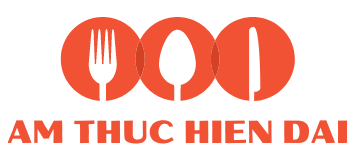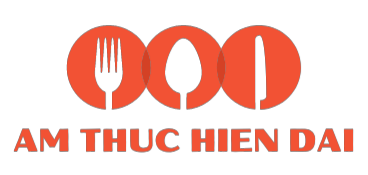Updated 2024/09/10 – Maison Béjo is no longer operating, but Johan still makes cheese with a new partner, Dani Milk – a dairy farm in Vietnam, which sources its milk from their own Jersey cows.
“Artisanal cheese made in Vietnam by young French entrepreneurs?” That’s a story worth hearing. That’s why we decided to spend a morning with Johan, the person who makes Maison Béjo’s unique cheeses in Xuan Quan Village, located in the suburbs of Hanoi. We toured the production facilities, talked about cheese-making, and of course, tasted some of the delicious varieties.
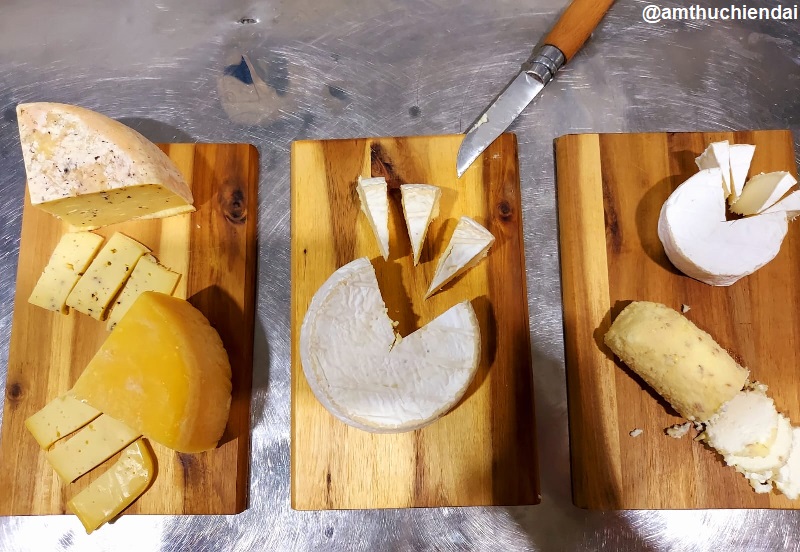
Founding Maison Béjo
Coming to Vietnam
Johan arrived in Vietnam in 2018, and his first business venture was a travel agency founded with his wife. It was going well and even surpassed their initial plans until the unexpected happened: Covid-19 hit, and suddenly there were no tourists in Vietnam. Johan faced a tough decision – return to France or start over.
As he puts it, “I had to choose between going back to France and finding a job, or staying in Vietnam and creating a new activity. I chose the second option.”
From “cheese scientist” to artisanal cheese maker?
When faced with the challenge of re-inventing himself in Vietnam, Johan turned to what he knew best – cheese-making. And it made perfect sense, considering his background of six years working as an engineer for one of France’s top cheese producers, Compagnie des Fromages & Richesmonts in the Research and Development department.
Johan initially produced as a hobby the first “Tomme” cheese from his apartment in Hanoi. This cheese received positive feedback from the expat community in Vietnam, who were thrilled to find a local alternative to imported French cheese. Before he knew it, what had started as a hobby became a full-fledged business opportunity.
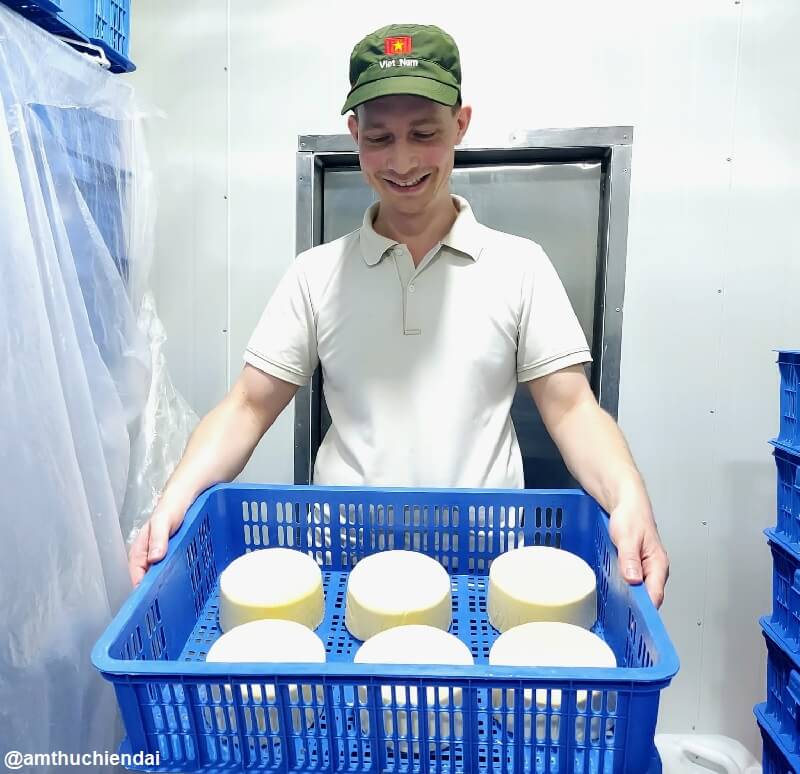
Through the French Chamber of Commerce in Vietnam (CCIFV), Johan met Benjamin, another French entrepreneur, who was eager to help take the idea of artisanal cheese-making in Vietnam to the next level. Benjamin took charge of marketing and distribution, allowing Johan to focus his energy on the cheese-making itself.
And thus, Maison Béjo was born in 2020.
Cheese: What exactly is it?
Before getting into the details of how Maison Bejo is making its product, Johan reminded us what cheese truly is.
The origin of cheese
Sometimes people tend to overthink the origin and purpose of cheese. In reality, cheese was primarily created as a way for people to preserve milk in times when refrigerators did not exist.
Thousands of years ago, people discovered that by coagulating milk with enzymes and draining off the excess water, they could produce a dairy product that could be stored for weeks or even months at cellar temperature.
The idea of creating a gastronomic product that could be paired with wines and take a place of choice on fine dining tables only came after.
As Johan explains, “Necessity created cheese and also shaped its form. For example, in mountainous areas where cows didn’t produce much milk during the winter, people developed pressed hard cheeses like Comté or Emmental that could be stored for months or even years. In areas with abundant grass for cows year-round, there was no need for such long-term preservation, so people developed a tradition of soft and fresh cheeses.”
The relation between between Vietnamese people and cheese
While Vietnam doesn’t have as strong of a cheese-making tradition as France, it would be wrong to assume that Vietnamese customers are only interested in eating mass-produced cheeses like “Pho ma Con boi Cuoi” (known as the “Laughing Cow” cheese). While this cheese, produced in Vietnam for more than 65 years by the Bel Group, has a significant market share, local customers are hungry for a more elaborate cheese experience.
Johan has been pleasantly surprised by how well the local population has received Maison Béjo cheeses. “There’s a common belief that Vietnamese people won’t like strong cheese, but we’ve found that our Camembert – Le Petit Béjo has been well-received despite its bold flavor profile. We’ve even been asked if we’re planning to make blue cheese.”
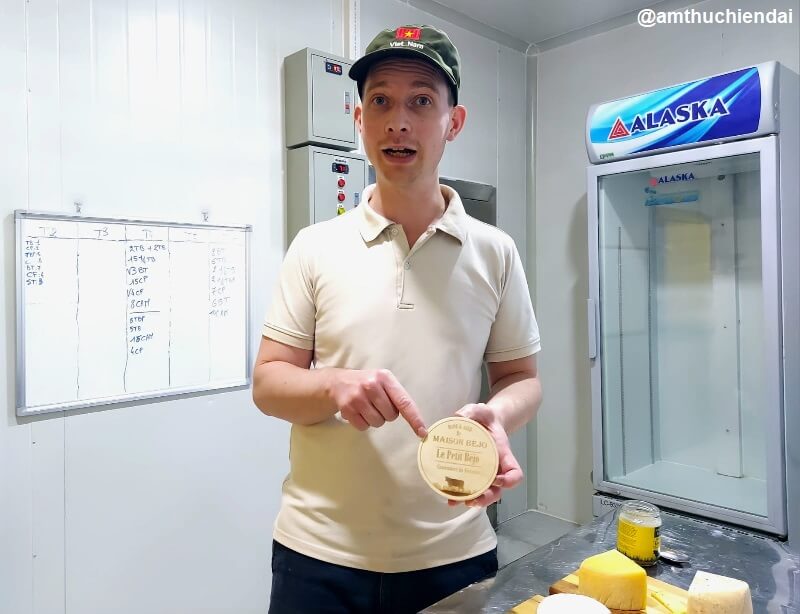
Making Maison Béjo Cheese in Vietnam
As a food enthusiast, it’s common to assume that a passionate cheese maker is an artist.
However, in talking with Johan, we quickly discovered that he was first a true scientist. Johan doesn’t rely on inspiration or intuition; instead, he approaches his craft with a rigorous, scientific mindset that involves careful measurements and calculations from the conception of the cheese to its final journey to reach customers.
Sourcing Milk
Maison Béjo sources its milk from Phù Đổng District de Gia Lam, Hanoï at a collection center, which gathers milk from small exploitations owned mostly by farmers who have 3-4 cows.
According to Johan “This provides a great supplemental income for the farmers as milk is relatively expensive in Vietnam, and cows can cost up to $2000, which is a big investment for them.”
Approximately 250 Liter of milk per day is used by Maison Béjo. The milk arrives fresh every morning and is of course unpasteurized.
Johan emphasizes that all the milk is tested for antibiotics not only for health reasons but also because the presence of such products in the milk could just make the production of cheese impossible.
As for the goat cheese, Maison Béjo gets supplied once a week from a small exploitation in Ba Vi.
How to make Cheese: Maison Béjo’s process
The equipment:
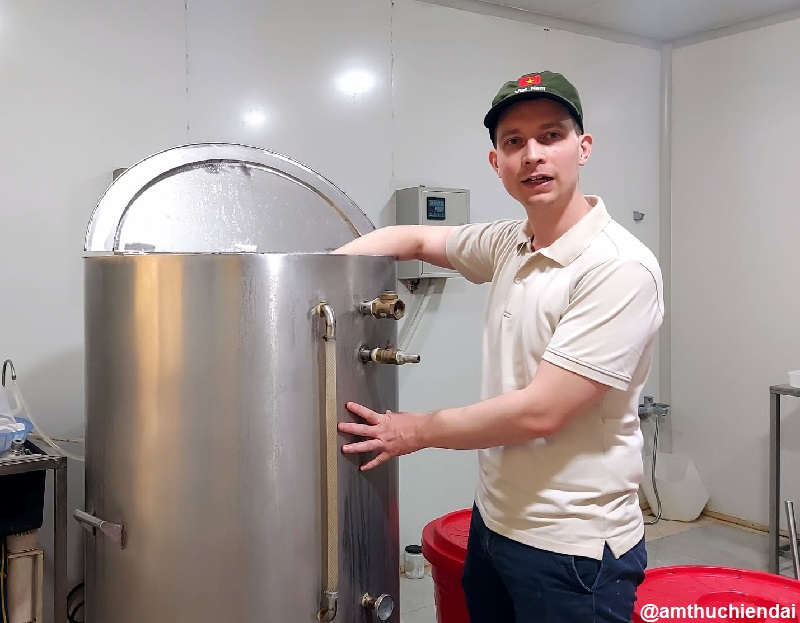
Maison Béjo produces its cheese through a complex and technical process. But even before being able to get started with that, the first challenge for Maison Béjo was to acquire the right equipment here in Vietnam. Rather than attempting to import costly and unsuitable equipment from France, Maison Béjo opted to make use of local resources. In Hanoi and the surrounding areas, many skilled professionals could create Inox tools according to Johan’s specifications.
A massive stock pot used to prepare the traditional “Pho Soup” was even given a second life in the process.
The process:
The process itself starts by warming up the raw milk to a temperature of 30-35 degrees Celsius. Then, a key ingredient called Rennet is added to the milk. Rennet is a complex set of enzymes produced in the stomachs of ruminant mammals. This ingredient allows the milk to coagulate, which is crucial in making cheese.

Johan explained to us “ We import the best available Rennet from France as working with the highest quality enzymes is essential. It’s the only imported product that Maison Béjo uses to make its cheese”.
Once the milk has coagulated and the extra water has been extracted, the process will differ depending on the cheese produced.
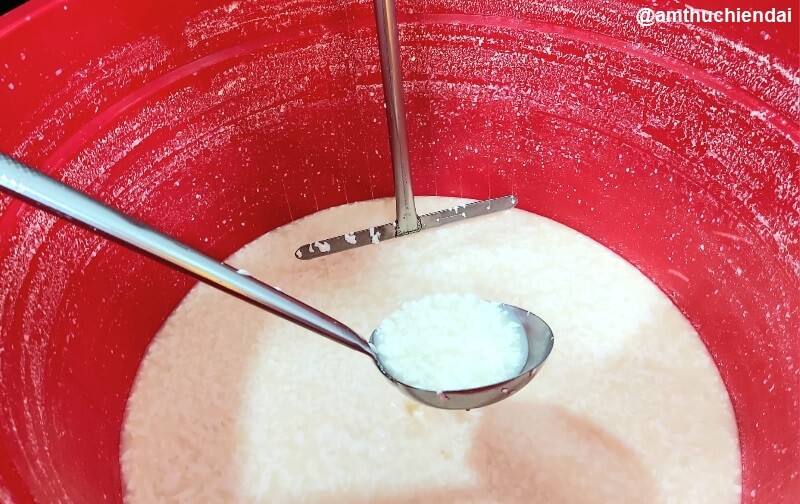
We cannot enter into the details of the fabrication of each product but the key thing to understand is that cheese is a “living” food from its conception until it’s eaten. Artisan cheesemakers work together with bacteria and/or mushrooms to progressively shape the taste of the cheese.
The crust around the cheese is a living part of this process, not just a protective layer.
- For instance, in the case of Tomme Cheese, washing it regularly with salted water during the 2 to 3 months fabrication process feeds the bacteria living on the crust, which gives the final taste to the cheese.
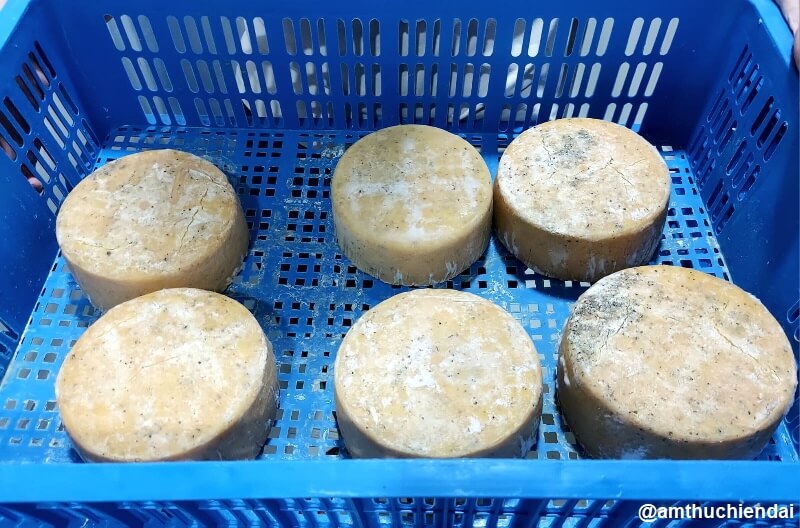
- For the Camembert, it’s a mushroom, the Penicillium, which will break down proteins and lipids contained in cheese, giving both its flavor and its “melty” texture.
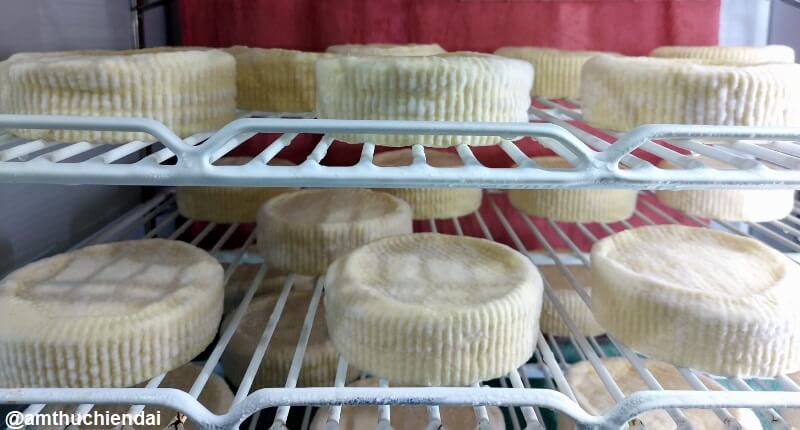
Ultimately, the artisanal cheese production process involves supervising a large number of parameters such as pH, temperature, and texture, which can lead to unexpected results if not closely monitored. Each batch of cheese needs to be controlled before selling, given the fact that each piece has truly unique identity.
As Johan concludes, ” An artisanal cheese is a living food which means that a minor change in any parameters such as the weather or alimentation of the cows can produce very unexpected results.”
The different types of cheese made Maison Béjo
In just a few years, thanks to Johan’s expertise Maison Béjo has been able to bring to the market several cheeses with distinct identities. We were fortunate enough to taste them all:
- Le Camembert – Le Petit Béjo: Camembert belongs to the family of soft cheeses with a bloomy rind, in which we also find Brie or Coulommiers. True national pride, Camembert de Normandie regularly tops the rankings of the most popular cheeses in France. It was logical for Maison Béjo to offer its take on this famous cheese. To elaborate The Petit Béjo- Johan resuscitated a project of his former employer named “Diamond” in which he was helping to elaborate the “Best possible Camembert” to complement the portfolio of the cheese maker.
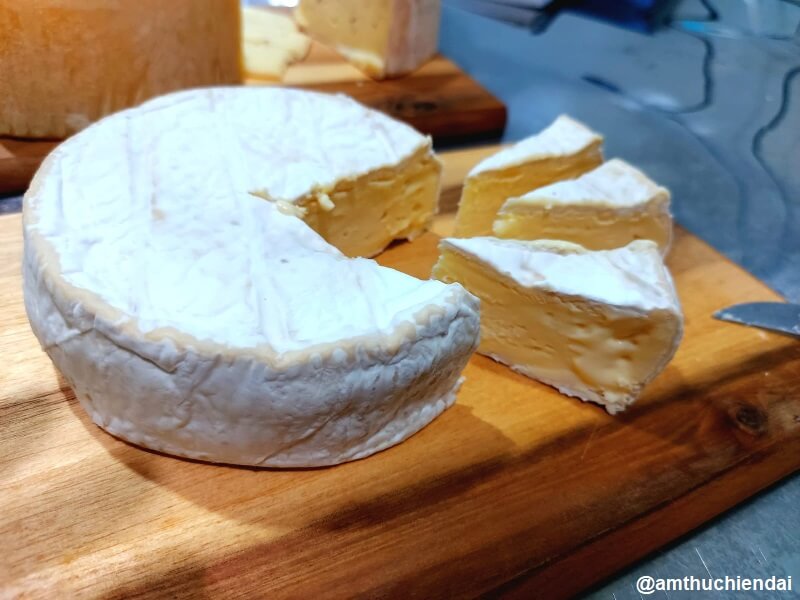
- The Caprette of Ba Vi: Caprette is a unique goat cheese. The Cheese is produced with raw goat milk from the northern district of Ba Vi, specialized in milk production for many years.
- The Sen Tuyet is a fresh goat cheese coated with dried lotus seeds. This cheese is the very first of its kind and a creation from Johan who wanted to experiment with a traditional Vietnamese ingredient.
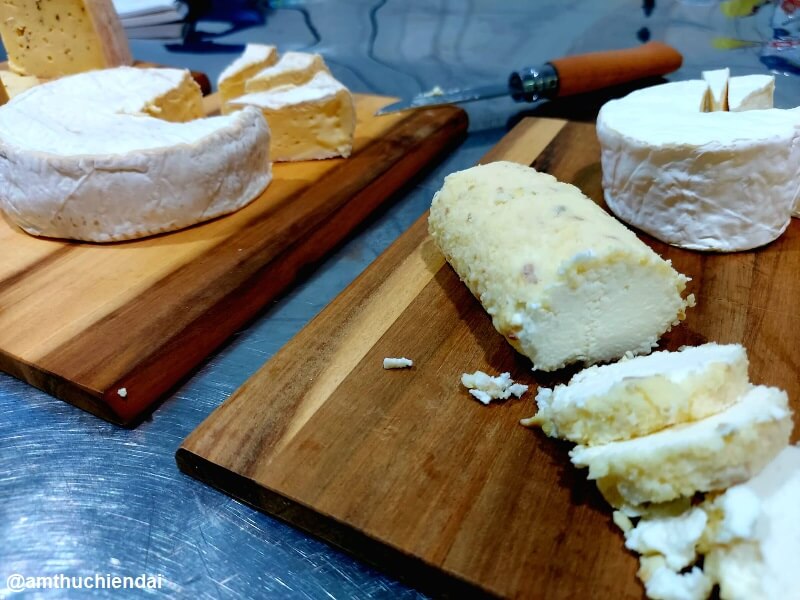
- The Tomme Béjo is the first cheese crafted by Maison Béjo. This semi-hard cheese is aged for 2 months and produced exclusively with Vietnamese milk. Johan recommends people try melting this cheese like Raclette.
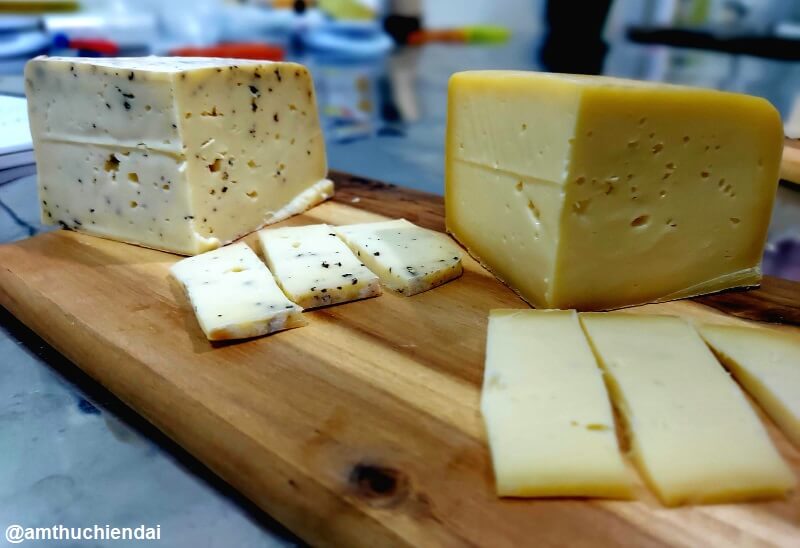
Maison Béjo is also producing Fresh Cream and Butter.
Distribution: how to sell artisanal cheese in Vietnam?
Making great cheese is of course the foundation of Maison Béjo but there is no profitable business if you are not selling your products.
If word of mouth leading to direct sales among Expats initially quick-started Maison Béjo’s business venture, it’s now distribution in stores and Vietnamese customers that is making it sustainable.
Johan estimates that currently 80% of its sales are made through retail thanks to partnerships with distributors such as Annam – Le Square Epicier Fin or Saint Honoré. This presence has allowed Maison Béjo’s cheese to be distributed not only in Hanoi but also in Ho Chi Minh City and Danang.
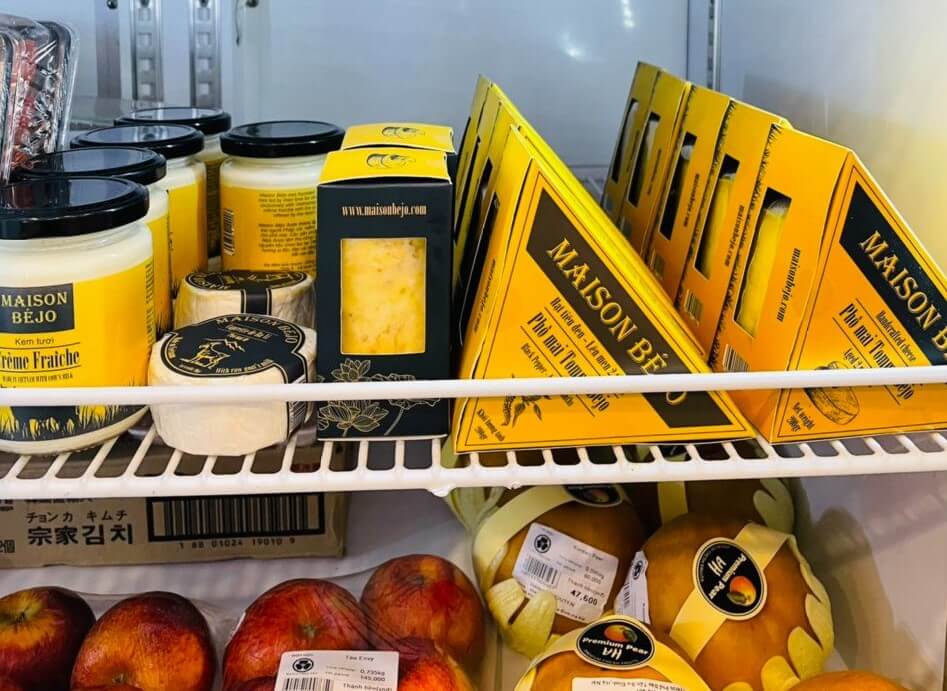
Maison Béjo has also become the supplier of choice for several restaurants interested in adding high-quality cheese to their menu. Quinza and Colette for example have included Maison Béjo cheese in their Menu.
More recently the French Grill at JW Marriott Hotel Hanoi also decided to start using the artisanal Butter of Maison Béjo.
What’s next for Maison Béjo?
A few months ago, Maison Béjo was asked to provide the French Embassy with a cheese selection for a prestigious private gastronomic event organized for a dozen Ambassador wives.
Reaching this level of recognition was a milestone in Maison Béjo Journey.
The obvious question now is: What’s next? The first goal for Johan is to keep promoting Maison Béjo’s products to increase its sales volumes.
He explained “We are still a small business and we still have place in our caves to increase our volumes without having to make drastic changes to our production site. Increasing our sales would allow us to progressively build the financial resources that we will need in the future for bigger investments”.
Another project Johan is silently working on is a new Tomme Cheese. “I now have both the time and the expertise to start producing a bigger Tomme cheese that I will be able to age for a longer period”.
We cannot wait…
